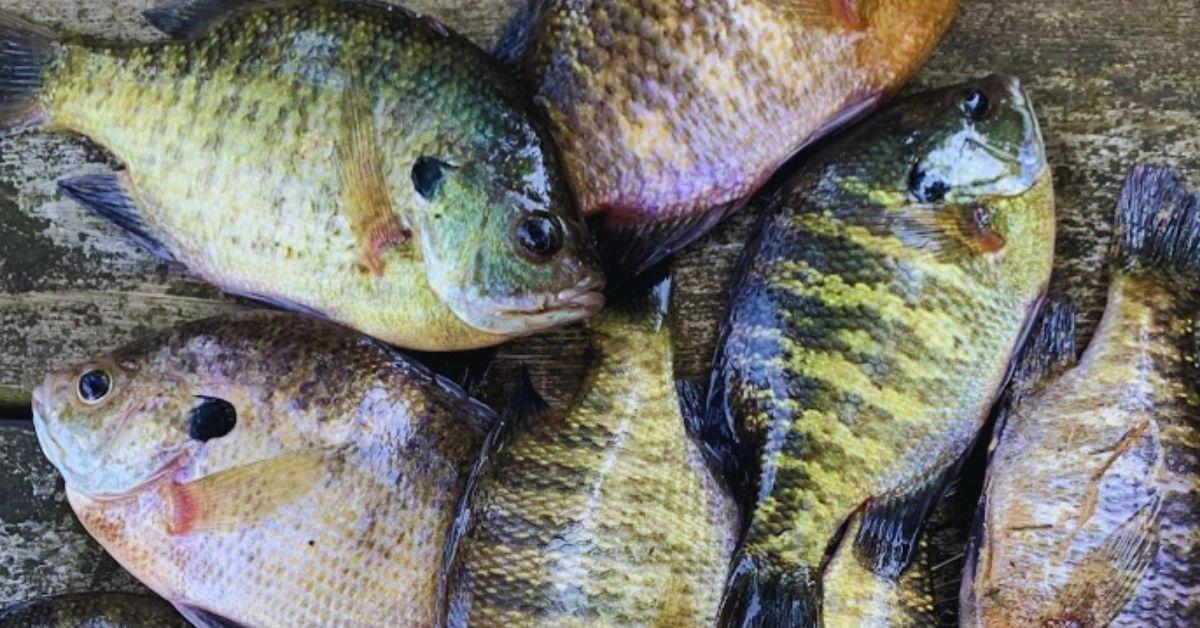10 Tips For Spring Panfish: How To Catch More Bluegill
Spring is the ultimate season for catching panfish because the fish are spawning and aggressively protect their nests from intruders. Their aggressiveness makes panfish susceptible to both live and artificial baits thrown anywhere close to the fish’s nest. A panfish that can be found on just about any body of water throughout the country is the pugnacious bluegill.
Here are 10 tactics that will help you fill out a stringer of bull bluegill in the spring:
1) Look Shallow
I have seen bluegill nests in clear water less than 2 feet deep, so start your search for bluegill in shallow mud or gravel banks. If you are fishing a pond, concentrate on the shallow end rather than the dam of the pond where the water is deepest.
2) Sight Fish
Clear water gives you the opportunity to sight fish for bluegill. Nests are easy to find in water that has 2 to 3 feet of visibility. The spawning beds are located close together in a small area and look like moon craters. You will usually see the males circling around on the nest attacking anything that comes near them.
3) Go Live
Nothing beats the real deal for spawning sunfish. My favorite live bait is a cricket but wax worms and red wiggler worms are also great for bluegill. Nightcrawlers also work for spawning bluegill, but you need to just pinch off a piece of the worm otherwise the panfish will just keep nibbling off pieces of the whole nightcrawler and you will never get a hook into the bait thief.
4) Think Small
Whether you are using artificial flies on a fly rod or plastic grubs with spinning or spincast tackle, you should scale down in size. A bluegill has a small mouth so you need to present a small lure that the fish can engulf easily.
5) Go Light On Tackle
You need to use light line (2- to 4-pound test depending on water clarity) to deliver live bait or artificial lures to the bluegill nests. In gin clear water you might have to scale down to 2-pound test, but for most applications 4-pound test will allow you to throw the lightweight lures and small live bait rigs smoothly and accurately to the spawning beds. Ultralight rods and reels are best for fishing with light line and small baits.
6) Affix A Bobber
Spawning bluegill usually hover slightly above the nest so you want your bait to stay right in front of their nose. Affixing a small bobber above your bait is the best way to keep your bait at the right depth. Keeping the bait off the bottom and suspended right in front of the panfish’s nose will trigger the most strikes from spawning bluegill.
7) Start Outside And Move In
When casting to a spawning area, make sure you cast first to the outside edge of the beds rather than throwing to the middle of the nest cluster. Catching the spawning bluegill on the outer beds prevents from disturbing and spooking the fish in the middle of the nest cluster so you will have a better chance of catching more bluegill from the spawning area.
8) Find Cover For Bigger Fish
The biggest bluegill will always spawn in the hardest-to-reach spots, which is usually under a laydown log, overhanging tree limbs, brush piles or weed pockets. The best way to catch these fish is to dip your bait next to the cover with a long (10 to 12 foot) panfish pole.
9) Fish Afternoons
Bluegill are aptly named sunfish because they are most active on sunny days. The water temperature is at its peak in the afternoon and bluegill get more active as the water temperature climbs throughout the day. So you can sleep in and start fishing for bluegill after lunch for the best action.
10) Be Stealthy
Fishing pressure tends to make spawning bluegill spooky and harder to catch later in the spring so you need to take a stealthy approach. Keep noise to a minimum whether you are fishing from the bank or in a boat. Keep a low profile to make sure you avoid casting your shadow over the spawning beds and try to make your bait enter the water as quietly as possible.
Written by John Neporadny and images courtesy of David Yang
Updated February 7th, 2022 at 2:28 AM CT


